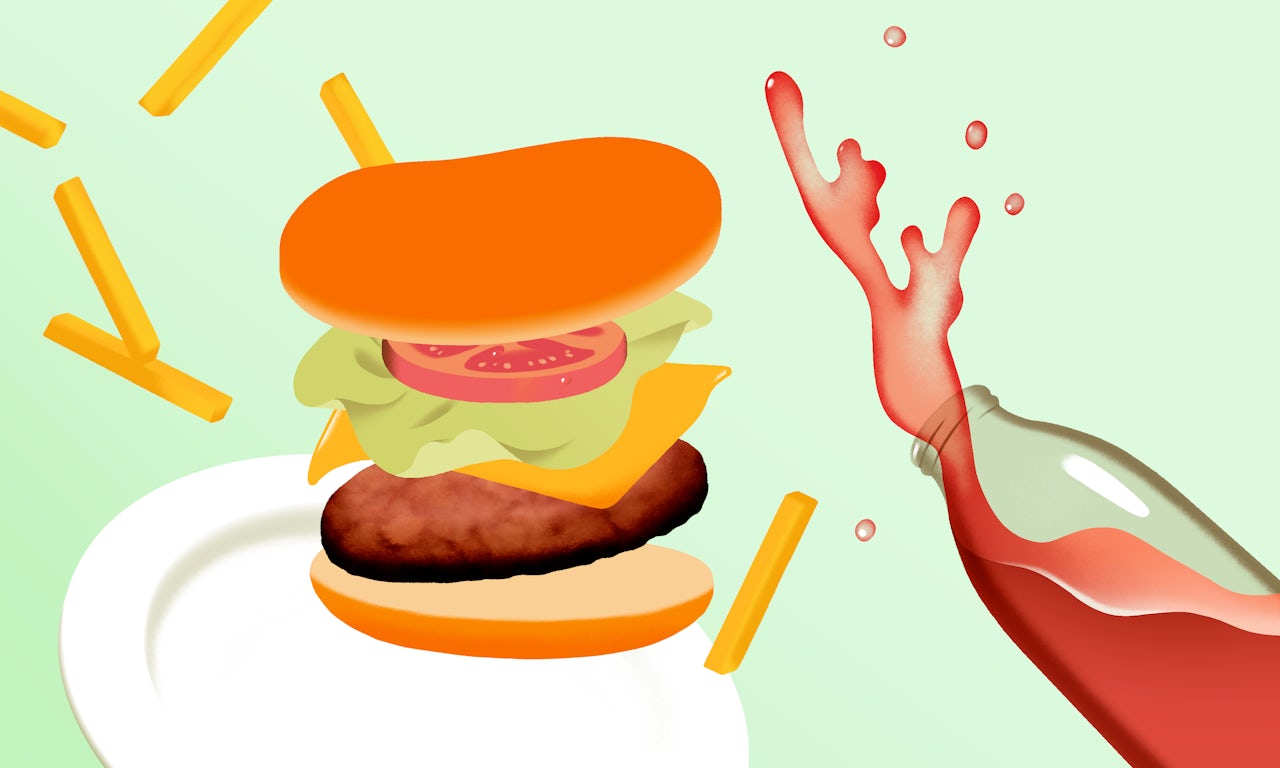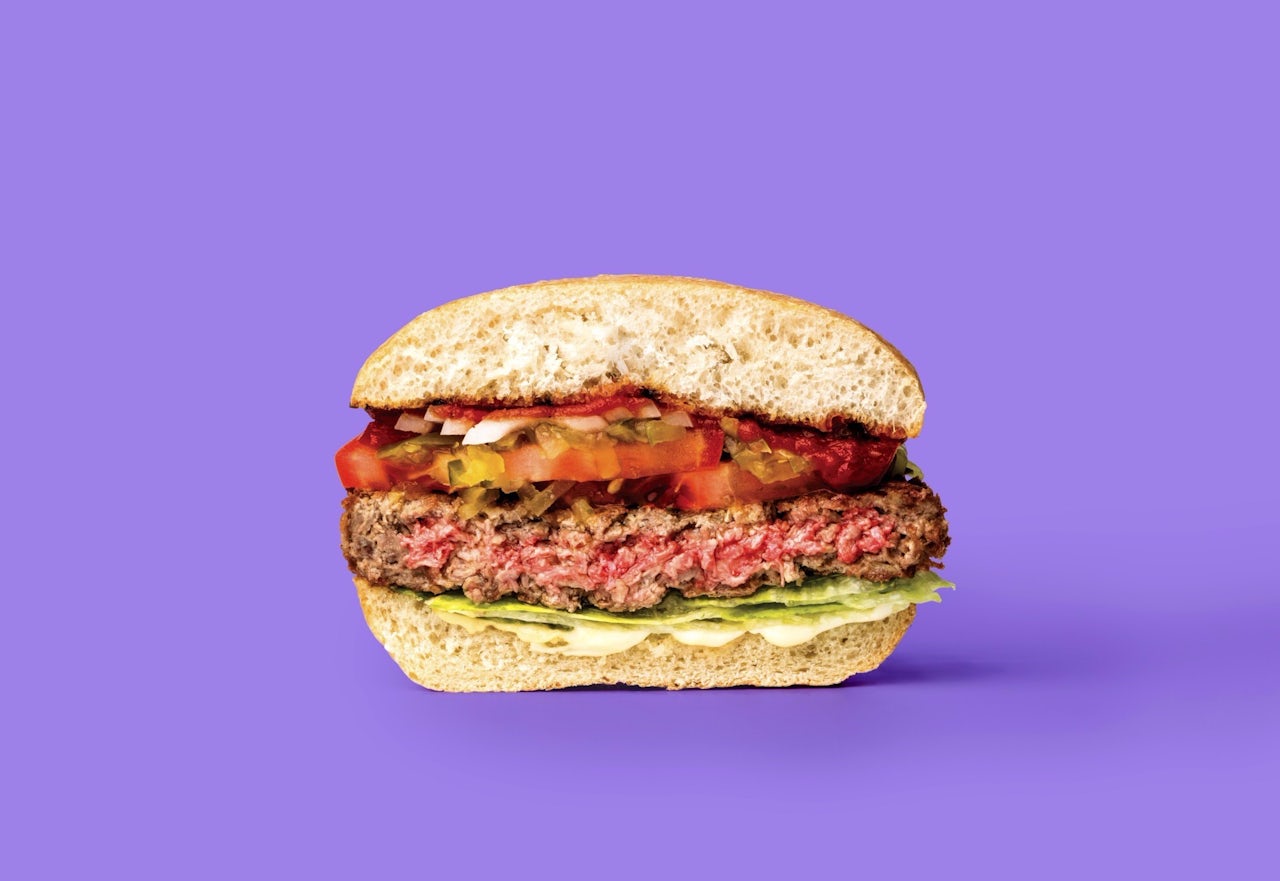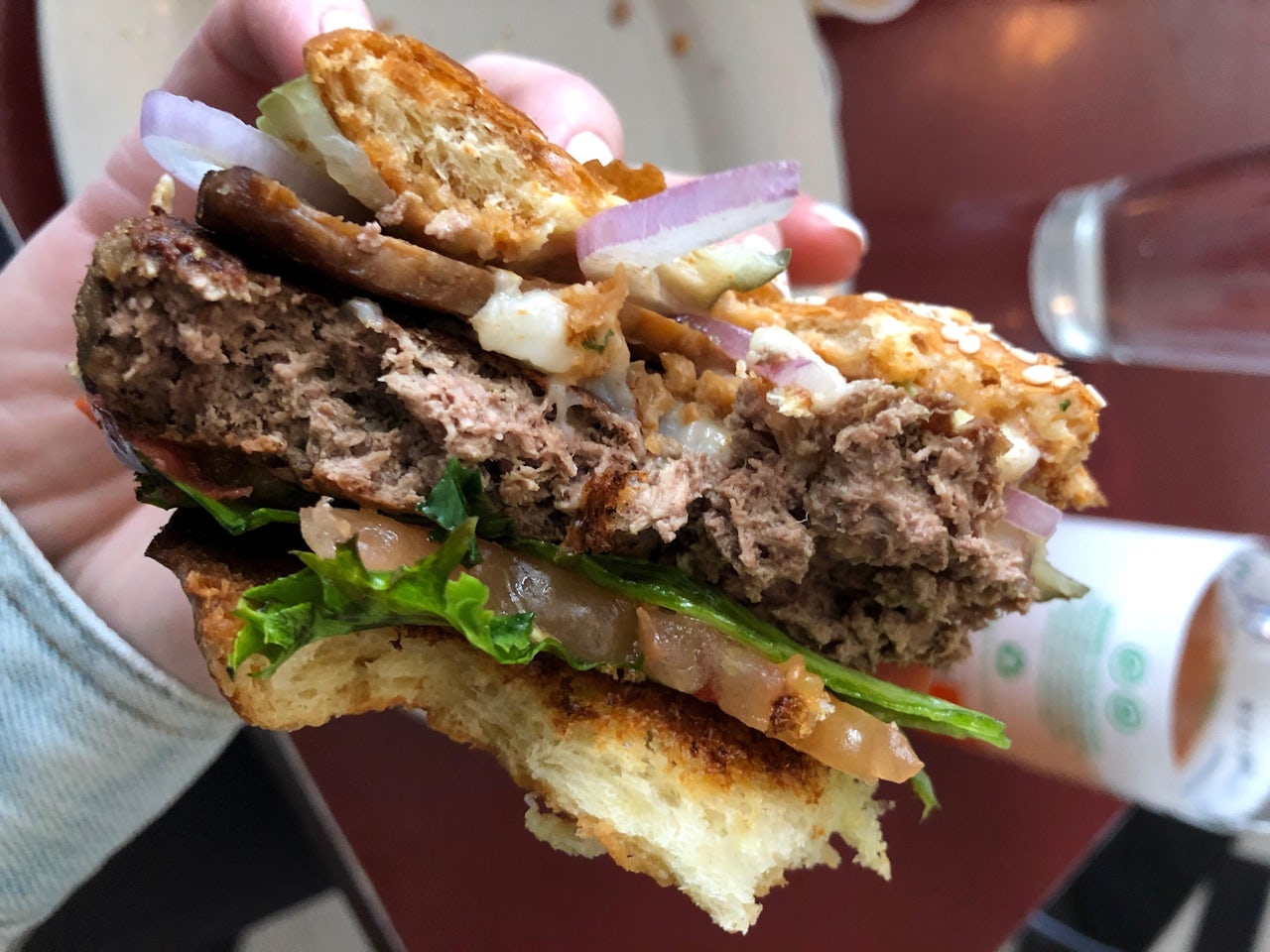I feel conflicted about foods designed to be like other foods; Impossible Burger “meat,” for instance, is meant not only to look and feel and taste like ground beef, but represent it precisely nutritionally as well (specifically, 80/20 ground beef, which is annoying because given an opportunity to nutritionally tweak something, why wouldn’t you). Thanks to rising externalized and practical meat costs, it might get to the point where I don’t eat burgers any more frequently than I currently eat, say, filet or ribeye, or edible gold leaf. Impossible Food makes a lot of lofty claims about the positive future cost- and earth-saving effects of its non-meat versus the meat we currently mass-produce, distribute, and consume. But things are still the opposite of what they will be in the future and a “burger” made of vegetables costs like $5 more than just a regular beef one.
When the Impossible Burger first appeared, food blogs were alternately drooling or getting skeeved out by the fact that it was “meat” (mostly wheat and potato protein) that would “bleed”; most photos of these patties show them red and bloody, like a medium rare beef burger. But since those fetish-y photos, Impossible Burger has begun shipping its non-meat across the nation, it’s cropped up in just shy of a thousand of locations across many cities. It’s even being served now at White Castle. I settled in at my local burger restaurant where Impossible burgers are being served at a premium with a bottle of “protein tea” to take a crack at experience a futuristic dining-out experience.
To my surprise, not only does the Impossible burger “meat” do as the food blogs said, it also goes gray and sort of dry and spongy when it gets overcooked; the meat charade carries on regardless of how much or how little you cook it. My own Impossible burger did not bleed at all, but it had a sort of lightness and bounce to the texture that reminded me of McDonald’s burgers, or a bit like chewing on foam rubber. Despite that it has quite a bit of fat in it, apparently mostly in the form of coconut oil, there is no melting richness to it like what you would get with a real 80/20 burger. While it was not a good burger, it was not meaningfully experientially different from most mediocre somewhat-overcooked burgers.
The flavor was distinctly un-burger like, though it did have its own umami savoriness that played well with all the classic burger accoutrements (cheese, onions, pickles, lettuce, tomato). The least convincing flavor is a sort of smoky one; it tasted like the meat was engineered to make you think the burger has been cooked over a flame regardless of how it actually came to be. While I could tell it was not beef, and knew intellectually it was not beef, I’m not entirely sure that I could have been served it unaware and known it was not beef. But there are so many things that go into making a burger a burger, what the actual patty is made of or tastes like ends up just not being that meaningful when there are bread and vegetables and sauces. But it appears the experience of an actual ground beef patty that takes center stage, dripping with myoglobin and saturated animal fats, will actually become a thing of the past.
Would I eat the Impossible burger again? Yes, out of necessity, but I dread our meatless future.




